Introduction
The term "Sestieri" in Cortina indicates three different realities. First, the six districts in which the town is divided are called "Sestieri." The origin of the six geographic districts is lost in memory but probably dates back to the period in which the "Serenissima," as the republic of Venice was known, governed these lands; in fact, there are also six "Sestieri" in Venice.
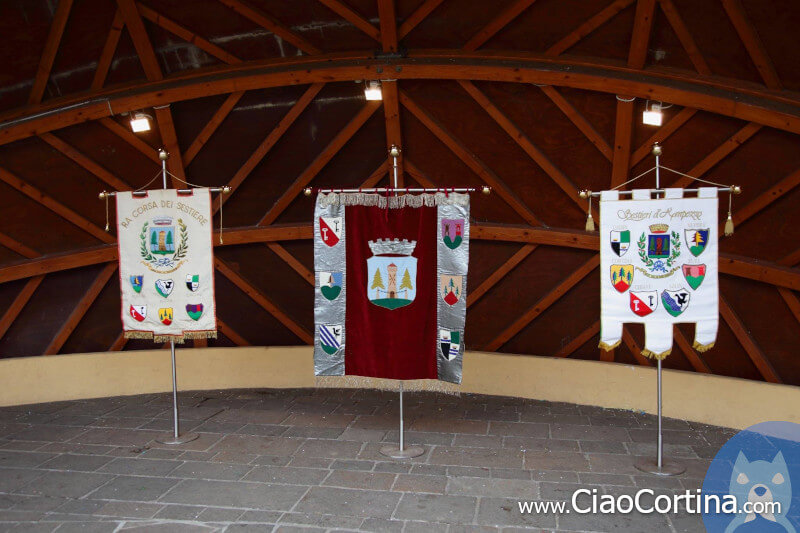
Second, the "Sestieri" are also the six sports associations that organize Cortina's country festivals every year and that coordinate the sport activities of the resident children. The boundaries each association deals with correspond to the geographical ones and will be explained later in the article.
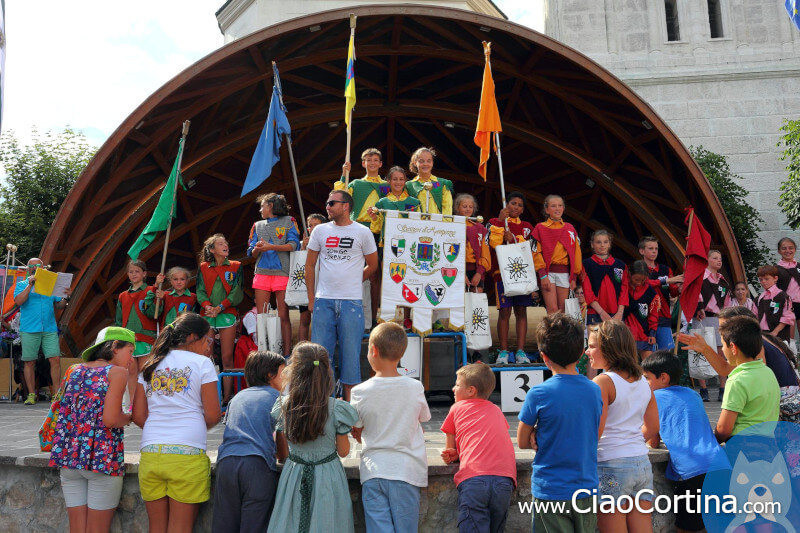
Finally, the "Sestieri d'Ampezzo" defines the association of volunteers from all six districts that takes care of organizing events, such as the "Run of the Sestieri," the football tournament, or the folkloristic wagons. They coordinate all the volunteers from the different districts for the realization and participation in the activities of the town. Let's see them now in detail.
Historical notes
As already mentioned above, the subdivision of the town into six districts, also known as "Sestieri," happened around the 15th century. Before this date, the country was divided into decenas, family groups of about ten families.
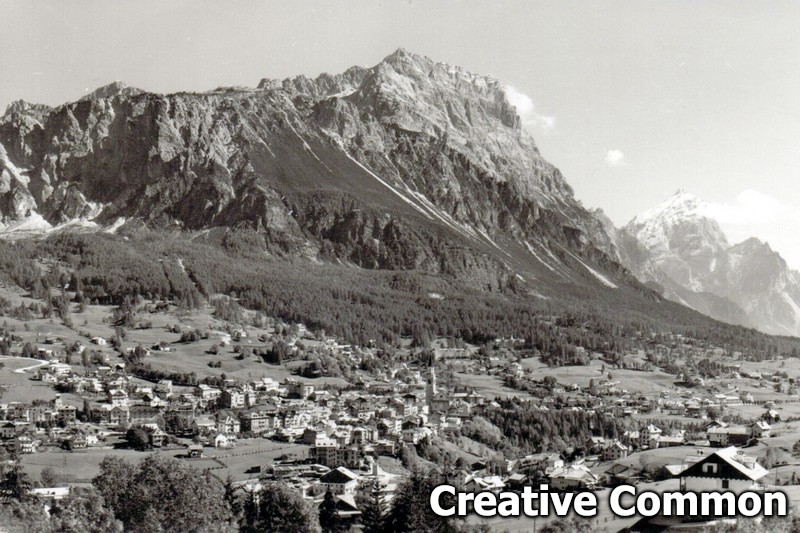
At that time, Cortina was under the control of the Venetian Republic, which was divided into six districts. It's commonly assumed that Cortina divided itself into six districts to emulate or praise its capital city, Venice.
In this article, we want to write about the modern role of the "Sestieri." If you want to read about the history of the "Sestieri" in ancient times, we invite you to read the page we wrote about the history of Cortina, which can be found below:
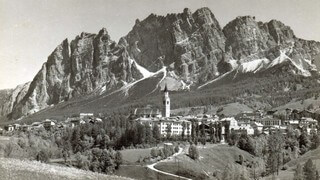

The association "Sestieri d'Ampezzo"
In 1918, Austria lost the First World War and had to cede the territory of Cortina to the Kingdom of Italy. As a result, the Sestieri lost a lot of their administrative identity. The well-known orthopedist Sanzio Vacchelli, who at the time was in charge of the office for tourism and local promotion, decided to try to give a new luster to the "Sestieri."
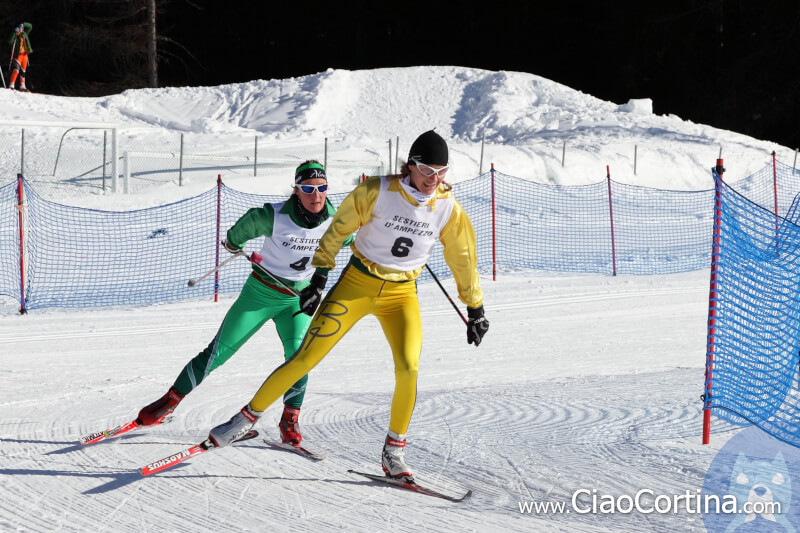
On February 23, 1936, he organized the first edition of "Ra Corsa dei Seštiére," a cross-country skiing race where athletes from the different districts challenged each other. At the end of the race, there was a parade of folkloristic wagons. Over time, the winter palio was supplemented by many other activities, such as the summer palio, the soccer tournament, the food and beverage service at the Ski World Cup, and the forest cleanup.
There were a lot of activities that had to be organized, in addition to the requirement of volunteers to realize them. In order to coordinate the six different "Sestieri," they joined the "Sestieri d'Ampezzo."
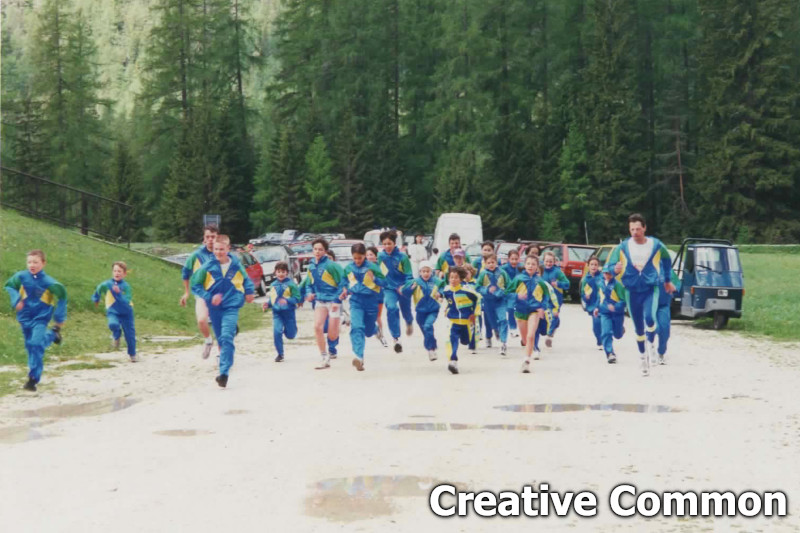
It is a gathering that includes the six presidents of each "Sestiere," plus a seventh president of the "Sestieri," whose main function is the organization of all the common activities, as well as acting as an institutional figure and spokesperson for the other associations and the municipal administration. By statute, the purpose of the "Sestieri d'Ampezzo" is:
- The promotion and enhancement of local folklore in harmony with its constituent traditions.
- The spread and enhancement of summer and winter sports that are related to the traditions themselves.
- The organization of all those cultural, local, and social events that have always characterized this fellowship.
In addition to all this, the Association of the "Sestieri d'Ampezzo" creates an important link between the people of Cortina and their own town, as well as being essential for the integration of non-Ampezzans into community life, thanks to the many volunteer activities they help organize.

Sports associations
As already mentioned previously, one of the original purposes of the "Sestieri" was to organize local sports competitions, which were played by athletes who had to be actually residents of the "Sestiere" they represented.
Disputes and discussions on this subject are well rooted in the memory of the village, with countless residency verifications, controversies, and complaints.
Emblematic is the story of a house built on the border, created from a small buried stream. After years of discussion, it's still half in one "Sestiere" and half in another.
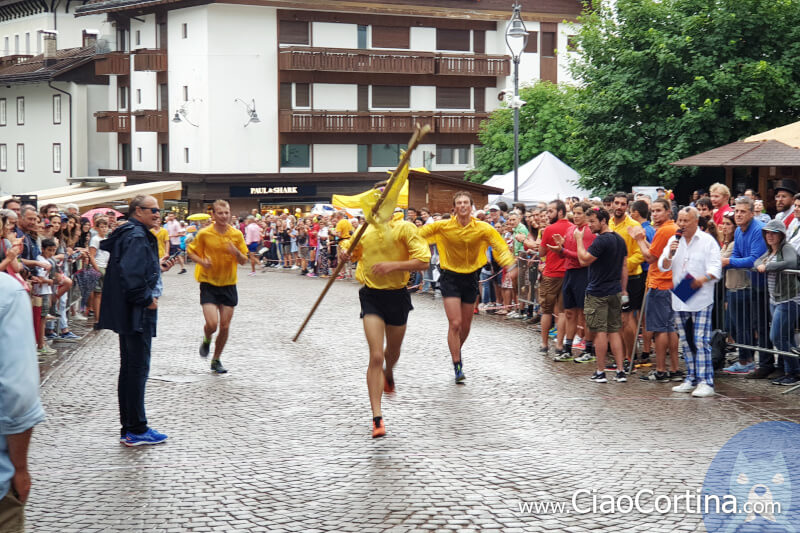
Over the years, this competitiveness led to the formation of tight-knit groups, which took on more and more identity. In order to earn something and recruit as many athletes and volunteers as possible, each "Sestiere" invented increasingly ingenious systems. The most successful were the country festivals. These were meeting places where volunteers cooked and sold local foods, drinks, and beers. This increased, even more, the bonding of those groups of people who were working, drinking, and having fun together.
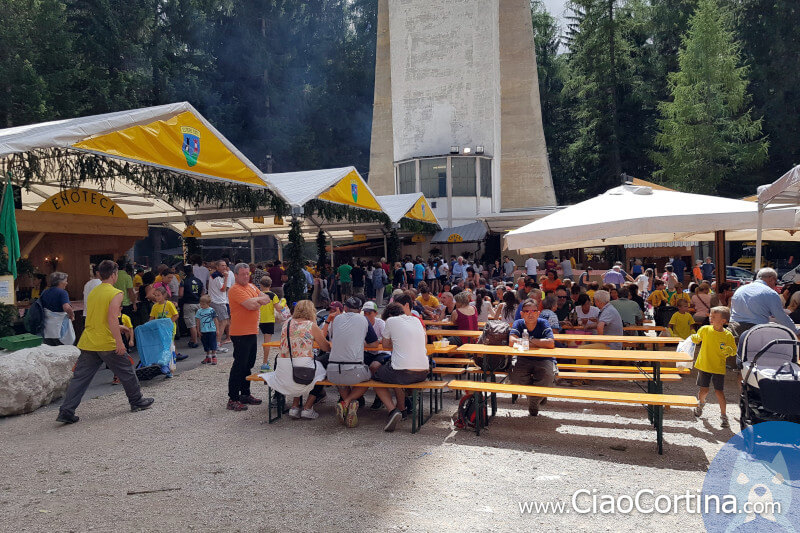
In this way, each "Sestiere" was able to make a small cash fund with which they could pay for sports training for the kids who could be trained without expense from their families. Younglings would be new participants in sports competitions, bonding with their peers, and, growing up, would volunteer for country festivals. Over the years, these activities became more and more structured, until the modern country festivals, which we extensively describe in the article below:
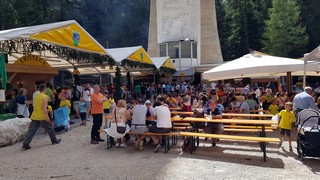

The sport events
Below, we'll see how the main sporting events and other ancillary competitive activities organized by the "Sestieri d'Ampezzo" take place.
- The Summer Run of the "Sestieri," also known as "Ra Corsa dei Seštiére," is a relay running race. It takes place on the first Sunday of July, during the town fair. The path is in the streets of the center of Cortina and ends in "Corso Italia," under the bell tower. The final time is given from the sum of all the individual times of the relay participants. The men's race is run by four athletes, each running fifteen hundred meters, or a mile. The women's race is run by three athletes, each covering one thousand two hundred meters, or three quarters of a mile. The "minipalio" is a mixed relay dedicated to children, where three athletes cover six hundred meters, or a third of a mile, each. The men's run has been held since 1949, the women's version since 1981, and the kid's one since 1985.
- The stump cutting also takes place during the town fair. It is a game in which the six districts challenge each other, in pairs, to cut a tree trunk using a "sión," the dialectal name of a large lumberjack saw, built to be used by two people. In a game, each district performs two cuts, the first on one side of the trunk and the second on the other. The ranking is determined by the sum of the two times. Each "Sestiere" has its own "sión," which is jealousy preserved for the event. If a "Sestiere" abandons the cut or does not complete it along its entire length, it is automatically eliminated. The stump cutting has been disputed since 1982.

- The last game that cheers up the July town fair is the tug of war. It is the classic game of strength; the teams are made up of five people. Although it is a very simple game, the choice of side is not totally fair, as the part where there are the shops is slightly uphill. For this reason, the side is drawn by lot with a coin toss. The tug of war has been held since 1982.
- The Winter Race of the "Sestieri" is a cross-country relay race in free technique. It is usually held at the ski center in the locality of Fiames. It takes place in the carnival week, on a day that varies based on organizational needs. In less snowy years, it's moved to the track in the "Tre Croci" pass. It's a relay race. Each member runs along the same route, and the time is given by the sum of the individual times. The men's palio is run by three athletes over a route of five kilometers, or three miles, each. The women's race is done by two athletes over a route of two and a half kilometers, or one mile and a half, each. The "minipalio" is a mixed relay dedicated to children, where three athletes cover five hundred meters, or a third of a mile, each. The cross-country race is also called Ra Corsa dei Seštiére, the same name of the summer running race. The men's version has been held since 1936, the women's since 1981, and the kid's one since 1985.
- The "Sestieri d'Ampezzo" football tournament is played on the football field in the locality of "Zuel," usually from the beginning of July to mid-August. The tournament has taken place since 1971 and is one of the oldest in Italy. During the event, the teams from the districts compete in a single round, and a ranking is drawn up based on the points accumulated. Throughout the tournament, there is a refreshment service for athletes and supporters provided by volunteers from the different districts.
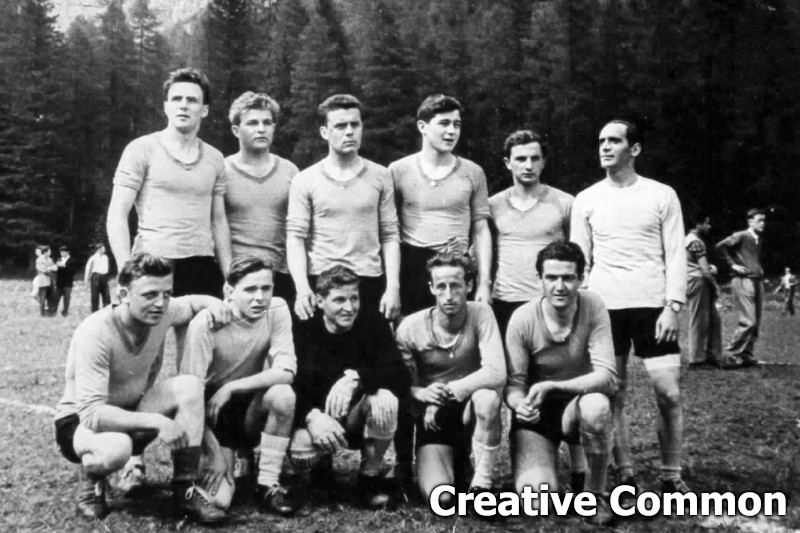
If you want to be updated on the activities of the "Sestieri," we recommend you follow the Facebook page of the "Sestieri" or the Instagram page of the "Sestieri."

Geographical "Sestieri"
The boundary between the different "Sestieri" is usually demarcated by waterways. Over the years, some of them have been moved underground for urban reasons. Below you can see a beautiful map of the original boundaries of the different "Sestieri."
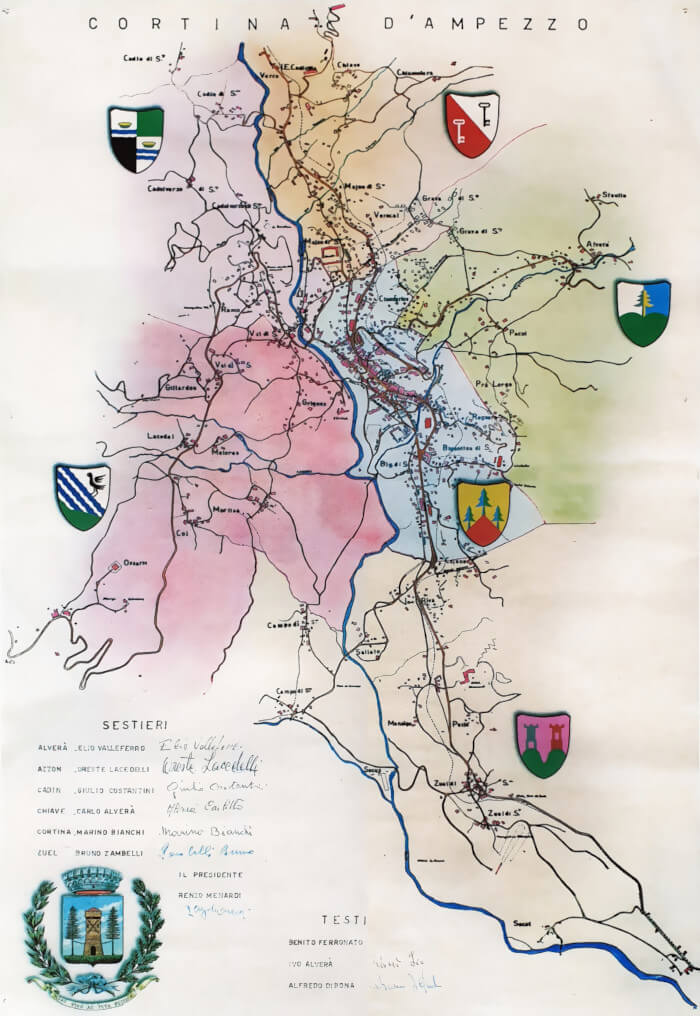
On the map above, you can clearly see the different areas in which the town was divided. Let's see what the various colors represent:
- In green there is "Alverà," the district in the east area of Cortina. It includes the fraction of "Alverà," as well as the areas of "Pecol," "Pralongo," "Staulin," "Grava di Sopra," and "Grava di Sotto." The flag of "Alverà" can be identified by a fir tree on a green field above a hill.
- In red there is "Azon," the district on the western side. It includes the fractions of "Crignes," "Val di sotto," "Val di Sopra," "Gilardon," "Lacedel," "Meleres," and "Mortisa." The flag of "Azon" is a black bird on a white field; it is a crow, which has also become the mascot of the district.
- In pink there is "Cadin," the district in the north-west areas of Cortina. Includes all the fractions of "Ronco," "Cadelverzo," "Cadin di Sopra," and "Cadin di Sotto." The historical flag of "Cadin" is two basins on a quadripartite white field.
- In yellow ochre there is "Chiave," the district in the north-east area of Cortina. It includes the fractions "Verocai," "Majon," "Chiamulera," "Chiave," "La Vera," and "Codivilla." The flag of "Chiave" is two keys on a red and white party field.
- In blue there is "Cortina," the district of the center. It includes the central areas of the town, from "Corso Italia" to "Cianderies," up to the end of "Guide Alpine Road," and is the only district not to have any open borders. The "Cortina" flag is three trees on a yellow field.
- In light yellow there is "Zuel," the district in the southern area of the town. It includes the fractions of "Cojana," "Riva," "Salieto," "Campo," "Manaigo," "Peziè," the homonymous "Zuel," and "Pian da Lago." The "Zuel" flag is two towers on a blue field above a hill.
Thanks to
The writing of this page was also possible thanks to the books "Storia di Cortina d'Ampezzo" by Mario Ferruccio Belli and the book "Sestieri d'Ampezzo rievocano..." of Alfredo Spampani and Dino Colli d'Antogna as well as the help of the "Sestieri d'Ampezzo" which provide part of the photographs on this page.

Conclusion
We hope you liked this page on what the "Sestieri d'Ampezzo" are. Before saying goodbye, we would suggest you read our home page, with all the articles we wrote about Cortina d'Ampezzo.
If you want to thank us you can read the page Support us. If you only want to suggest a change, propose something or just say hello, in the section contacts and info, you'll find all the ways to reach us.